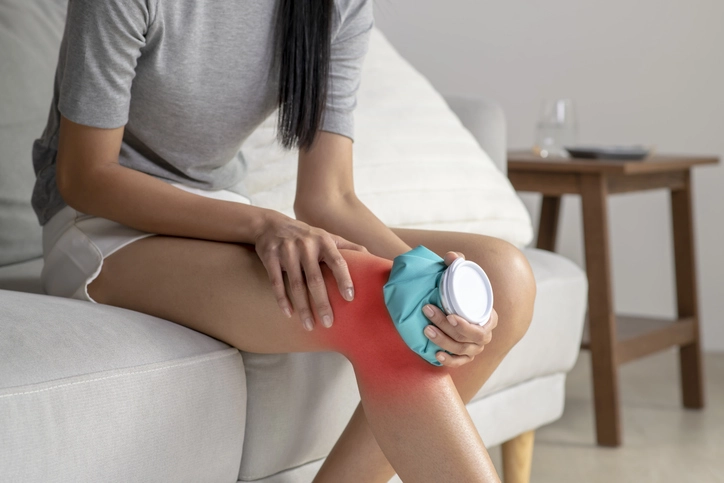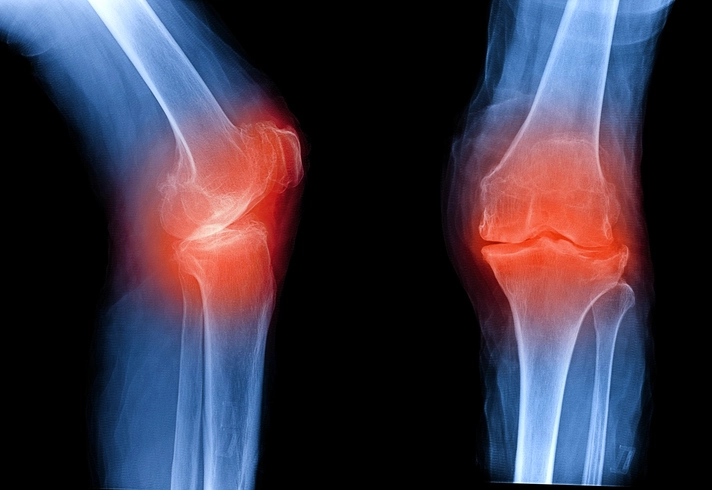Common symptoms of osteoarthritis
- Pain
- Stiffness
- Loss of flexibility
- Pain and stiffness in particular when the joint hasn’t been moved for a period of time
- Joints appearing larger (swollen)
- A grating or crackling sound or sensation in your joints
- Weakness and muscle wasting around the arthritic joint

What is osteoarthritis?
Osteoarthritis can affect any joint in the body, but the most common areas affected are the back, neck, knees, hips, hands and big toes. Often, you will only experience symptoms in one joint or a few joints at any one time. Osteoarthritis usually develops in people over 45 years of age, although younger people can also be affected.
Osteoarthritis can be slowed down from getting worse with a number of treatments offered to help alleviate the symptoms such as osteopathy, acupuncture, sports massage therapy and pilates.
The main treatments for osteoarthritis involve lifestyle changes – such as maintaining a healthy weight, exercising regularly and supportive therapies such as osteopathy or acupuncture to help make everyday activities easier. If treatments don’t alleviate the pain surgery is suggested to repair, strengthen or replace damaged joints. However, osteopathy can help with rehabilitation after surgery.

Types of Osteoarthritis Treatment
Managing osteoarthritis involves a range of treatments tailored to alleviate symptoms and enhance daily functioning. Osteopathic care offers targeted approaches such as joint manipulation, soft tissue techniques, and exercises designed to reduce pain and improve joint mobility. Lifestyle adjustments, including exercise routines and weight management, are crucial in mitigating its impact. Medications like pain relievers or injections aim to ease discomfort, while physical therapy strengthens muscles around the affected joints. In severe cases, assistive devices and surgeries like joint replacement are considered to restore joint function and alleviate pain.

Causes of Osteoarthritis
Osteoarthritis commonly stems from the gradual breakdown of joint cartilage, exacerbated by various factors. These include ageing, joint injuries from sports or accidents, genetic predispositions, obesity, and certain metabolic conditions. Lifestyle habits, such as repetitive movements or poor posture, can also contribute to the development of osteoarthritis. This deterioration leads to joint pain, inflammation, and restricted movement, progressively affecting overall joint functionality. Understanding these contributors aids in managing symptoms and addressing the impact of osteoarthritis.
How can osteopathy and acupuncture help osteoarthritis?
Osteopathic treatment and acupuncture can have a great effect in reducing pain, reduce swelling and improve mobility and the range of joint movement. Osteopathic Management emphases on eliminating or reducing symptoms through early diagnosis and improving lifestyle to prevent further degeneration. Treatment is not painful and often, symptom relief begins immediately. Osteopathic treatment involves gentle osteopathic techniques on joints, muscles and ligaments. This will involve soft tissue massage to loosen certain muscles around the joint to increase movement and reduce joint pain and stiffness, gentle stretching, acupuncture, mobilisations and traction techniques to increase movement in the joint. Acupuncture and osteopathy seems to relieve pain by diverting or changing the painful sensations that are sent to your brain from damaged tissues and by stimulating your body’s own pain-relieving hormones (endorphins and encephalins). This pain relief may only last for a while when you begin treatment, but repeated treatments can bring long-term benefit, often for several months to a year where you will be able to carry on with your usual daily routines without pain. Maintenance treatments once a month are recommended for arthritic patients to prevent further joint degeneration.

- Exercise – Exercises to do at home may also be prescribed to improve joint mobility and to reduce muscle spasm. Regular exercise that keeps you active and mobile and builds up muscle, so strengthening the joints, will improve symptoms. Exercise is also great for losing weight, improving your posture and relieving stress, all of which will ease symptoms and prevent further joint degeneration.
- Diet – Following a healthy diet can help you reduce your weight, which can make a significant difference when you try to manage your arthritis. Being overweight or obese often makes osteoarthritis worse as it can cause increased strain in your arthritic joint.
Supplements such as glucosamine sulphate and chondroitin sulphate may help symptoms and do not cause many side effects. - Hot or cold packs – Applying hot or cold packs to the joints can reduce the pain and symptoms of osteoarthritis significantly for a short period of time.
Osteopathic Treatments Are Covered By Private Health Insurance






